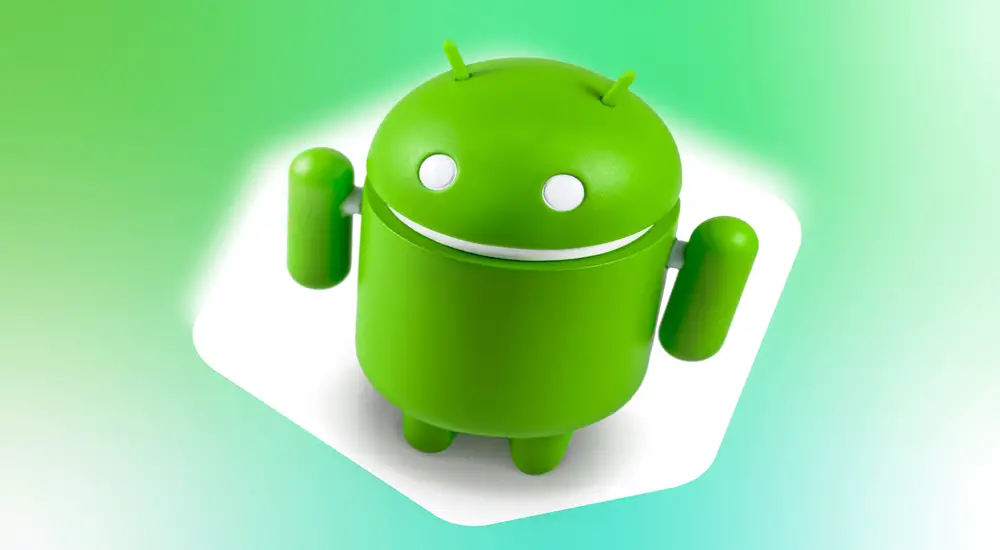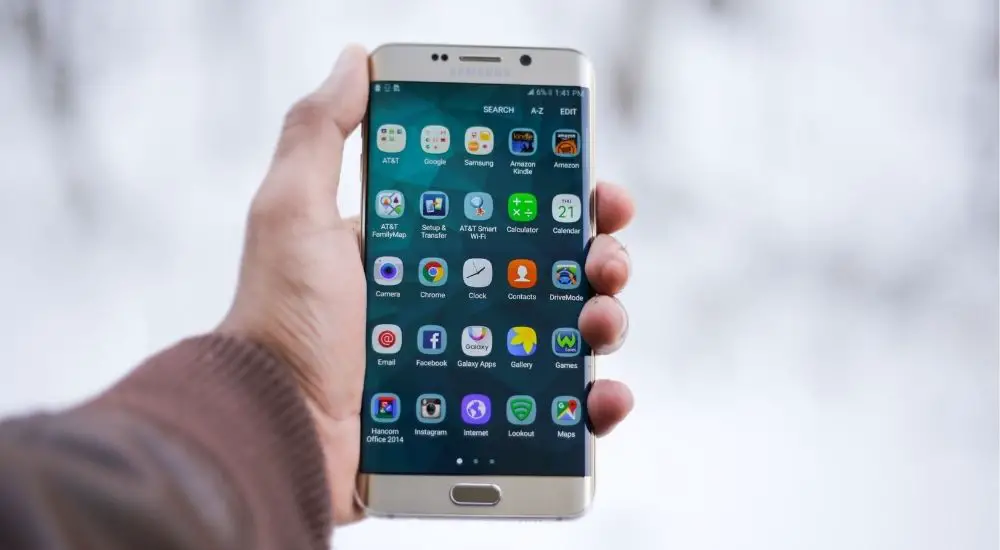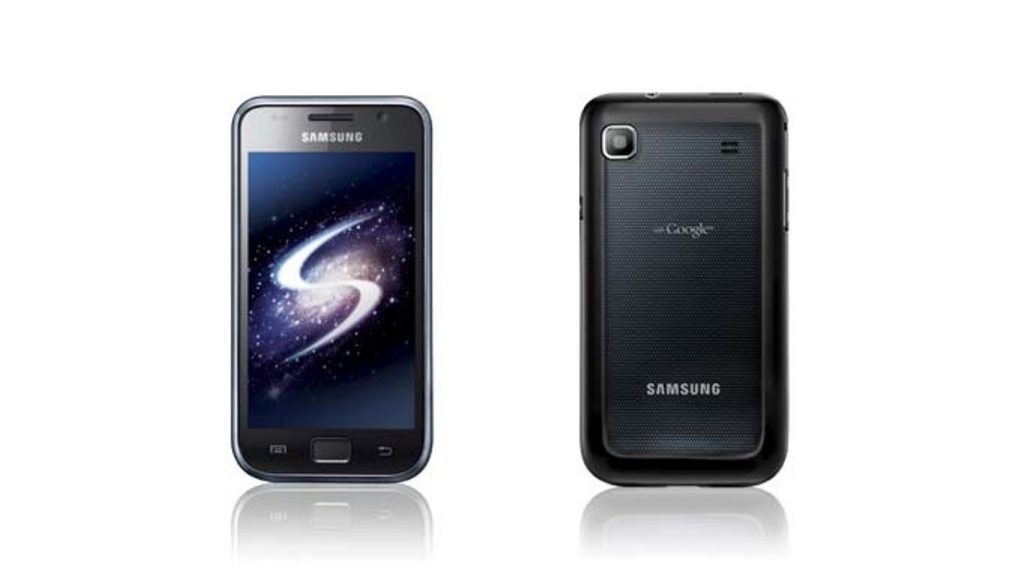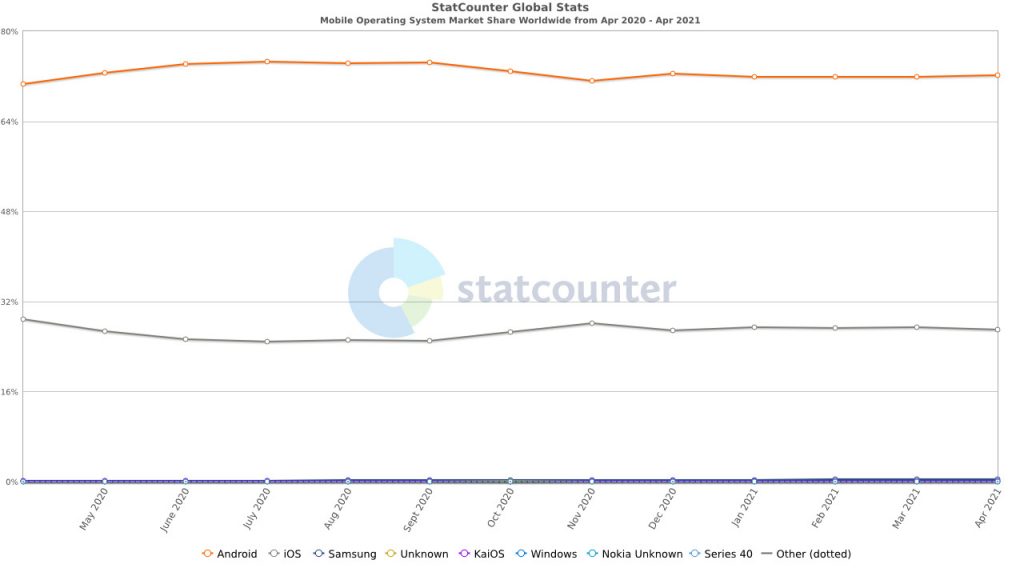What is Android? Even if you are using an Android-powered device, you may not know its historical evolution. Let’s find it out in this post.
As a start-up venture, Android Inc. was created in Palo Alto, California in 2003 by Rich Miner and et al to develop an operating system for digital cameras. But later, they saw a higher potential on smartphones and shifted their attention toward developing an operating system for mobile devices that would compete with Symbian and Microsoft Windows Mobile.
Meanwhile, Google was aiming to expand beyond the search engines and find new platforms for ads and revenues. Seeing the potential of an operating system on mobile phones, it cashed in and acquired android for just $50 million in 2005. Today Android powers 72.2% of smartphones in the world and splits the OS share with Apple’s IOS.

Android As An Open Source Project (AOSP)
Ever wondered why Samsung, Redmi, Huawei, and virtually all devices except Apple run on Android? That is because, unlike Apple’s IOS, Android is an open-source operating system. It is available for every company to take, modify and port to their own devices. Without bothering to create their own OS, several smartphone manufacturers have used Android with their own skin on top of their mobile devices.
The Android Open Source Project (AOSP) provides the information and source code needed to create custom variants of the Android OS. It helps smartphone manufacturers to ensure that their devices meet the OS compatibility requirements and keep the Android ecosystem free of major bugs and maintain uniformity as far as possible.
Additionally, Being an open source, Android is a paradise for developers and enthusiasts. The OS if free to modifications at will and any user with expertise can tweak and twist the OS to their own liking. They can add, remove or merge feature they want.
Moreover, they can also flash new custom firmware for better optimization and improve the camera quality, graphic/sound, and audio. Android lets developers play with its source code so that they could achieve the modifications they desire on their device. Rooting, flashing custom ROM, installing a custom recovery, and also modifying system software are all the reasons it has been so popular among developers and tech enthusiasts.
The First Android-Powered Smartphone
While Symbian OS was already in use on Nokia flagships since the late 90s, it was, in 2007 that saw major developments for smartphones.
Steve Jobs, the iconic figure behind Apple’s evolution launched iPhone 2G in 2007, its first-ever mobile phone that ushered in a new era for smartphones. Google meanwhile, was working on their own equivalent. It formed the Open Handset Alliance that included smartphone manufacturers such as HTC and Motorola, and also semiconductor companies such as Qualcomm, and carriers including T-Mobile.
Google launched its first-ever Android-powered smartphone in the form of T-Mobile G1 in the US, known as HTC Dream in other regions. The device included products or services from other companies such as Google Maps, YouTube, an HTML browser, and the earliest version of Android Market. The idea was clear Google was developing Android as the all-accommodating feature-packed OS for all smartphone companies.

The device’s arrival foreshadowed Google’s broader future goals with the open-source platform comprising of coordination among global smartphone manufacturers as well as semiconductors and telecom companies.
Check out: Samsung Nepal Launches Galaxy A52 And Galaxy A72: Find All The Specs
Android’s Unique Naming Conventions
One of the most unique features of Android OS has been its naming conventions. For most of the years since its advent, it used the names of sweet treats to refer to new variants of the OS.
In the beginning, Android did not name itself after dessert items. They were simply named 1.0 and 1.1 before resorting to the unique naming conventions.
| Code name | Version numbers | Release date |
| No codename | 1.0 | September 23, 2008 |
| No codename | 1.1 | February 9, 2009 |
| Cupcake | 1.5 | April 27, 2009 |
| Donut | 1.6 | September 15, 2009 |
| Eclair | 2.0 – 2.1 | October 26, 2009 |
| Froyo | 2.2 – 2.2.3 | May 20, 2010 |
| Gingerbread | 2.3 – 2.3.7 | December 6, 2010 |
| Honeycomb | 3.0 – 3.2.6 | February 22, 2011 |
| Ice Cream Sandwich | 4.0 – 4.0.4 | October 18, 2011 |
| Jelly Bean | 4.1 – 4.3.1 | July 9, 2012 |
| KitKat | 4.4 – 4.4.4 | October 31, 2013 |
| Lollipop | 5.0 – 5.1.1 | November 12, 2014 |
| Marshmallow | 6.0 – 6.0.1 | October 5, 2015 |
| Nougat | 7.0 | August 22, 2016 |
| Nougat | 7.1.0 – 7.1.2 | October 4, 2016 |
| Oreo | 8.0 | August 21, 2017 |
| Oreo | 8.1 | December 5, 2017 |
| Pie | 9.0 | August 6, 2018 |
| Android 10 | 10.0 | September 3, 2019 |
| Android 11 | 11 | September 8, 2020 |
However, fast forward to 2019, Google finally forsook its sweet treats in favor of the number. Its last Android version with a desert’s name was Android Pie released in 2018. Since then it has launched two versions in the form of Android 10 and Android 11.
Smarphones’ Own UIs on Top of Android
As Android is an AOSP, it is free to use and modify. There is almost no pure Android experience on smartphones as they all give their own treat to the OS. Samsung uses android but initially had Touchwiz interface now replaced with One UI on top of Android. Taiwanese company HTC called their UI, HTC Sense.

Likewise, Redmi also provides its own interface on Android with some monumental design modifications. They call their skin MIUI. Huwaei called their equivalent EMUI. One Plus uses Oxygen OS and Realme calls their own Realme UI.
The smartphone manufacturers do not provide a pure Android experience to mobile phone users. They want to give a signature profile to their devices and offer a different look to their UI which helps create a unique feel for the users. This helps the companies to distinguish themselves from each other and create a distinct identity which otherwise, could become a tedious experience in the presence of an exact OS across all of the devices.
Dont miss: Nagarik App Features
Samsung: A Major Beneficiary of Android
Samsung was a minor phone maker in the pre-2007 feature phone days. But with Android’s arrival, its fortunes reversed and it continued to leapfrog every other contemporary. Nokia faded off the scene, while brands such as Sony, LG, and HTC gradually declined but Samsung’s stars continue to shine. Now it is the competitor with Apple in the high-end segments of smartphones in innovation and technology. So how did Samsung achieve its global dominance from such a non-remarkable status?
With Apple and HTC’s own smartphones launch on their opposite OSes, Samsung rose to the occasion and launched its devices on Android. But the real deal started in 2010 when Samsung launched its first flagship “S” series in the form of the GT-I9000. The device came with a revamped design and major UI changes to previous regular Android-powered phones.

Samsung tried to stir the contest with Apple and it partnered with several US carriers to launch the device with slight modifications. Soon Samsung’s S series became a competitor to Apple. Samsung’s expansion strategy drove them to launch Galaxy Tab as a direct alternative. But it also introduced the Note lineup in 2011 to offer a phablet experience to those wishing for a large screen for the time. Samsung’s adaptability and its commitments towards innovation have not only saved it from decline but also helped it to become the biggest smartp[hne manufacturer. Currently its worth stands at$300BN.
Despite stiff competition from several Chinese brands, Samsung is still the only viable threat to Apple’s monopoly. Samsung’s proprietary display technology, its semiconductor production as well as its eagerness for regular design enhancements on its products make it a long-running enterprise in the smartphone race. Must credit where it’s due, Samsung climbed to its perch on the back of Android’s OS. It is fair to say that Samsung can owe its revolutionary uplift towards Android’s open-source platform.
Android’s Current Status
Android has been the leading smartphone OS since 2011. As brands’ use of it multiplied with the advent of new smartphone companies, far more devices run on the Android platform than on any other platform, most notably IOS. As of 2021 January, Android leads OS market share with 72.2% with a rough estimate of over 5 BN devices running on the open-source platform as of now.

Google indroduced Android Market in 2008 on smartphones for users to download apps for gaming, shopping, fun or other purposes. Later,
In 2012, Google replaced Android Market with Google Play Store turning it into the same mold as iTune. The downloading platform is cloud-based and houses over 3 MN apps to download from.
Android’s Current Worth
Android’s estimated worth is said to be over $3 bіllіоn which is equal to 0.7% оf Gооglе vаluе. with billions of devices running on its interface, it is the leader of smartphone OS by a landslide. as Samsung’s Tizen OS a dead case so to speak of and IOS being the only other major competitor, Android will remain the number one smartphone OS for the foreseeable future.
Are you an Android or an IOS user? What do you think of the evolution of Android as a mobile OS? Do you think there could be any alternative to Android OS? Let us know in the comments section below.



